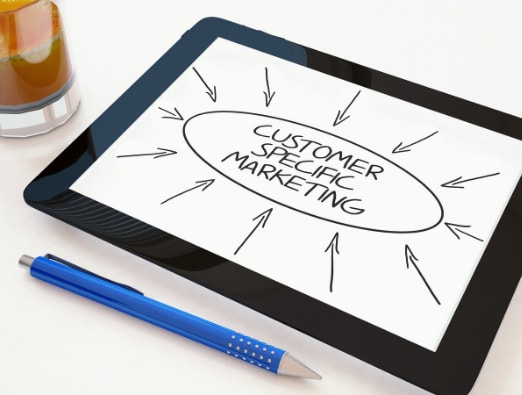Year-end tax planning for small business owners can be stressful. However, developing a smart plan doesn’t necessarily have to be overwhelming. In fact, small business tax planning helps you protect your business, prepare for the future and save money come tax time.
If you own a small business, you want to optimize your revenue and minimize your expenses and tax liabilities. Unfortunately, not everyone is well-versed in the strategies and available tools, resulting in paying far more than is needed. Take advantage of some small business tax planning strategies and tax tips for small business owners.
Smart Tax Planning Strategies For Business Owners in 2021
According to statistics, there are a total of 33.2 million businesses in the U.S. accounting for 99.9% of all private establishments. f you’re a small business owner, there are specific planning considerations in preparing to pay your taxes. Here are some steps you can do to make tax season a little stressful:
- Strategically evaluate your choice of business entity – There are several options for a business structure: sole proprietor, partnership, limited liability company, or different types of corporations. Each business entity impacts taxation in terms of income and deductions.
You may want to discuss with a tax professional to help you determine the best business entity type for you, including some small business and LLC tax planning strategies.
- Strategize end-of-year spending – Increasing your expenditures in the current year is one of the most common strategies to reduce your tax burden. Some experts also suggest deferring taxable income until the next calendar year to minimize your taxes.
- Take Advantage of New Tax Rules – Small businesses have several tax-cutting opportunities resulting from new tax laws for small businesses in 2020 to support the recovering economy due to the COVID-19 pandemic. Here are some of the rules you should review:
On top of these strategies, there are still some business tax tips in 2021 and tax planning for small business owners to help you prepare for what lies ahead.
Knowing How You’re Going to Pay Your Taxes
Small business owners are asked to make quarterly tax payments because the U.S. uses a pay-as-you-go tax system. Unlike employees, they don’t have an automatic system where taxes are paid ahead through payroll deductions. Failing to make quarterly tax payments can result in penalties.
The Internal Revenue Service (IRS) gives several options for business owners to make 2021 quarterly estimated tax payments:
- Crediting 2020 tax return overpayment to your 2021 estimated tax
- Sending in the paper vouchers for IRS 2021 Form 1040-ES
- Online payment using the link for IRS Direct Pay
- Through electronic funds withdrawal with the TY 2020 e-filled return
Planning Your Business for Quarterly Tax Payments
Making tax payments four times a year may not be the most fun way to spend your time. However, in the end, paying your business taxes quarterly can ease the burden of your tax duties:
- Determine your tax bracket. Your tax bracket is determined through your income and filing status, whether single, married filing separately, married filing jointly, or head of a household. Once selected, it tells you how much you should pay.
- Determine deductions and tax credits. Apart from the standard deductions, there are also itemized deductions for which you can qualify. Filing these itemized deductions, such as business expenses, can be worth the extra forms and your time.
You may want to consult with your tax professional to know what you’re eligible to deduct.
- Add self-employment taxes. The self-employment tax rate for 2021 is 15.3%, which is the sum of Social Security tax (12.4%) and Medicare tax (2.9%) on net earnings.
- Finally, calculate your taxable income, liabilities, and estimated quarterly tax payments. Once everything has been considered, you can determine your final taxable income, liabilities, and taxes due.
As mentioned, calculating your quarterly tax payments accurately is essential to prevent underpayment penalties. However, it may be challenging to estimate tax liabilities, especially if you have an irregular income.
Thus, the IRS offers the ‘Safe Harbor’ method of accounting to help taxpayers suffering from complicated tax calculations. You can use any of these tax relief methods to avoid underpayment penalties:
- You pay 90% of the tax you owe for 2021 (current year) in four installments;
- You pay 100% of the tax liability for the previous tax year (2020);
- If adjusted gross income is greater than $150,000 (married couple) and $75,000 (singles), you pay 110% of the tax shown on the tax return for the previous year (2020).
Each state may have tax rules that differ from federal regulations, so you need to make sure you are following the tax system in your state.
Tax Loopholes For Small Business To Include In Your Planning
A tax loophole, by definition, is a provision allowing taxpayers to reduce tax liabilities. Here are some of the tax loopholes for small businesses or tax avoidance strategies for small business owners:
- Carried Interest Loophole
- Mortgage Interest Deduction on Second Homes
- Deductible IRA Contributions
- The Home-Sale Exclusion
- The Saver’s Tax Credit
- Earned Income Tax Credit
- Small Business Retirement Plan Tax Credit
These are just some of the tax avoidance strategies, and there are still more. Generally, tax loopholes are legal, but tax evasion isn’t. However, you can avoid paying taxes through these loopholes, and your tax preparer can help you with the process.
New Tax Laws To Consider When Planning
Tax laws are constantly changing, which also require dynamic tax planning strategies for companies. As part of proper small business tax planning, a smart taxpayer needs to understand what has been changed and what’s new from the previous tax year.
For the 2021 tax year, there are several tax law changes and updates that taxpayers should know about:
- The Consolidated Appropriations Act, 2021
- Adjustments for inflation
- Planned tax increases for 2021
- Deductions and credits phaseout adjustments
- Planned changes to the alternative minimum tax
- Changes to retirement plan distributions
- CARES Act provisions that expired in 2020
Important 2021 Tax Filing Deadlines
The due dates for the quarterly estimated tax payments are the same each year:
- January 15 – for the 4th quarter of the previous year
- April 15 – for the 1st Quarter (January – March)
- May 17 – for the individual tax returns and last day to make 2020 IRA contribution
- June 15 – for the 2nd Quarter (April – May)
- September 15 – for the 3rd Quarter (June – August)
- October 15 – extended due date of individual tax returns
- January 15 (the following year) – for the 4th Quarter (September – December)
If the day is a weekend or a holiday, the due date is moved to the next weekday.
Wrapping Up
While these small business tax planning strategies are all helpful, some may not apply to your situation. Before making any significant decision, you may want to consult with a tax professional to discuss small business financials and tax planning strategies and help create a new tax plan for a small business like yours.
In general, all these strategies can help you understand more about how your business can minimize taxes.
Share with me how your preparing your tax strategy. Use #TaxPlanning on Twitter, Facebook, LinkedIn, or Instagram.
The content in this blog is to be used as informational purposes only. Always consult with a tax professional when it comes to how and when to file your taxes.













